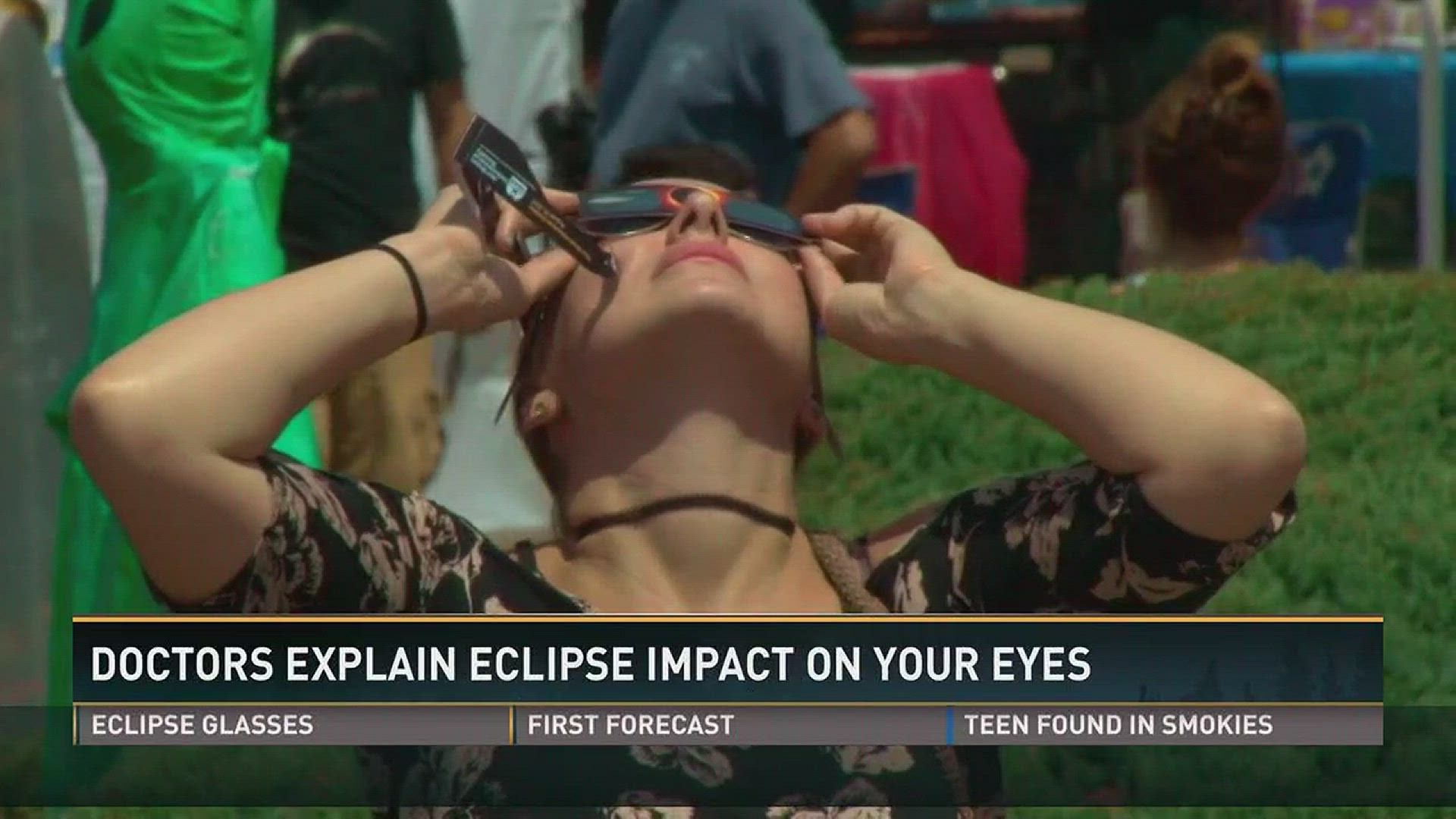After millions of people flocked to the path of totality to enjoy the solar eclipse, how can you know your eyes escaped unharmed?
Without eye protection, staring at the un-eclipsed sun for more than a few seconds can cause permanent damage, known as solar maculopathy or retinopathy.
“There is potential for permanent damage, certainly,” said Dr. Dorian Lain, an optometrist at The Eye Group in Knoxville.
He said while looking at the sun, the lens of your eye gathers and intensifies the light on the back, known as the macula. This can cause the area to blister.
“The retina bubbles, so your vision will bubble and warp right in the center,” said Lain.
That damage can take hours or days to appear. There are no pain receptors inside the eye, so you won’t notice any discomfort.

So how can you tell if your vision was damaged by the partial eclipse?
“Generally, you want to look for graying of vision, blurring of vision,” Lain said. “Vision that seems fuzzy.”
He said you can also print off an Amsler Grid. It’s like a sheet of graph paper. Patients look at the center.
“If the squares of that graph don’t look square, or are distorted or warped and bubbled in the middle, that would be an indicator,” said Lain.

He said if you’re still concerned, see a doctor. Some patients have already contacted him since the eclipse.
“We did have a patient who called today and said they used their telescope to look at the sun,” said Lain. “They said it burned their solar glasses. I think they got their eyes out of the way just in time.”
That’s why experts say it’s important to have a certified solar filter in front of your eyes, or any lens you use to look at the sun.


